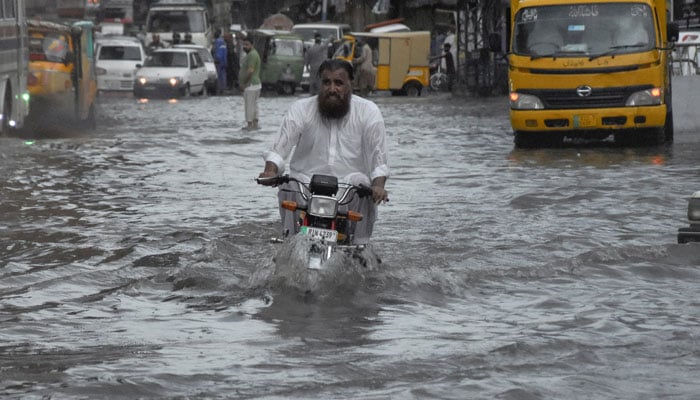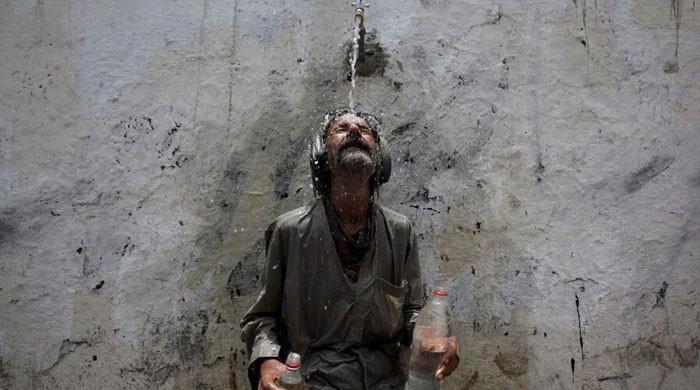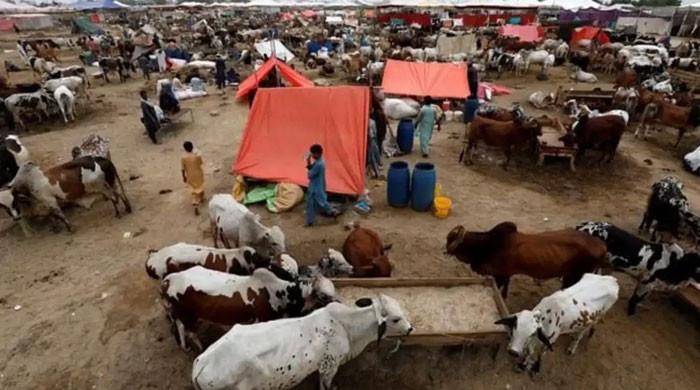More heavy rain likely in different parts of country including Karachi tomorrow
Nearly 140 died, and over 200 were injured in monsoon rains across the country since June 25, according to NDMA
July 24, 2023

- Most deaths reported from Punjab, followed by KP.
- Deaths occurred due to electrocution, building collapses, data show.
- "Monsoon currents penetrating country from Bay of Bengal."
At least 133 people have been killed and 215 injured in rain-related incidents since the start of monsoon on June 25 as torrential rains wreaked havoc across the country mainly in Punjab and Khyber Pakhtunkhwa (KP), according to a report issued by the National Disaster Management Authority (NDMA).
Every year, between June and September, monsoon winds bring rains to South Asia, accounting for 70% to 80% of the region's annual rainfall.
These monsoon rains are a mixed blessing for the region.
On the one hand, they are crucial to the livelihoods of millions of farmers and food security in a region of around two billion people. On the other hand, they bring landslides and floods.
According to a breakdown provided by the NDMA, 65 deaths occurred in Punjab, 35 in KP, 11 in Islamabad Capital Territory (ICT), 10 in Sindh, 6 in Balochistan, five in Azad Jammu and Kashmir (AJK) and one in Gilgit Baltistan (GB).
The majority of the deaths were mainly due to electrocution and building collapses, official data showed.
On Sunday, officials said the latest monsoon spell in Punjab and Khyber Pakhtunkhwa claimed around 15 lives across the different districts in Punjab and KP provinces within 48 hours.
In KP's Mansehra and Chitral districts, five people were killed, and over a dozen were injured. On the other hand, houses and roads were washed away after rain-triggered devastation in the districts.
Officials in Lahore, Pakistan's second-largest city, said it had received whopping 205mm rain in less than seven hours on Saturday, turning roads into rivers and leaving almost many areas without electricity and water this week.
The Pakistan Meteorological Department (PMD) has predicted more heavy rainfall in different parts of the country from July 25 to 30.
The Met Office said that monsoon currents are continuously penetrating the country from the Bay of Bengal and the Arabian Sea. A fresh westerly wave is also likely to enter upper parts of the country from 26th July, it added.
It said rain coupled with wind-thundershower (with few heavy falls) is expected in different districts of Punjab, Balochistan and Sindh including Quetta, Karachi, Hyderabad Multan and others on June 25 and 26.
Rains (with isolated heavy falls) is also expected in Kashmir, (Neelum valley, Muzaffarabad, Poonch, Hattian, Bagh, Haveli, Sudhanoti, Kotli, Bhimber, Mirpur), Gilgit Baltistan (Diamir, Astore, Ghizer, Skardu, Hunza, Gilgit, Ghanche, Shigar), Murree, Galliyat, Islamabad, Rawalpindi, Attock, Chakwal, Jhelum, Mandi Bahauddin, Sialkot, Narowal, Lahore, Sheikhupura, Hafizabad, Gujranwala, Gujrat, Kasur, Mianwali, Sargodha, Khusab, Faisalabad, Toba Tek Singh, Jhang, Sahiwal, Bahawalnagar, Okara, Chitral, Dir, Swat, Shangla, Buner, Mansehra, Kohistan, Abbottabad, Haripur, Peshawar, Mardan, Swabi, Nowshera, Kurram, Lakki Marwat, Kohat, Dera Ismail Khan, Bannu, Karak and Waziristan from 25th to 30th July with occasional gaps, it added.
The NMDA has also warned of urban flooding in low-lying areas including in Islamabad, Faisalabad, and Lahore and “may trigger landslides in the vulnerable areas of Murree, Galliyat, Kashmir, GB and hilly areas of Khyber Pakhtunkhwa during the wet period”.
Scientists have said climate change is making seasonal rains heavier and more unpredictable.
Last summer, unprecedented monsoon rains put a third of Pakistan under water, damaging two million homes and killing more than 1,700 people.
According to officials, Pakistan has the world's fifth-largest population and is responsible for less than 1% of global greenhouse gas emissions.
However, it is one of the most vulnerable nations to the extreme weather caused by global warming.











